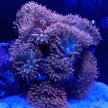-
Topics
-
Latest Update
-
3
-
-
3
Clearing Space - Selling RBTA
Hi.. interested in the RBTAs. Do contact me at 87206036 -
2
Corals to sell/give
Zoa with GSP sold. All GSP collected. Sent from my FCP-N49 using Tapatalk -
0
Clearing Purple monti
Clearing out Big purple monti due to space. $30 for all both pcs
-








Recommended Posts
Join the conversation
You can post now and register later. If you have an account, sign in now to post with your account.